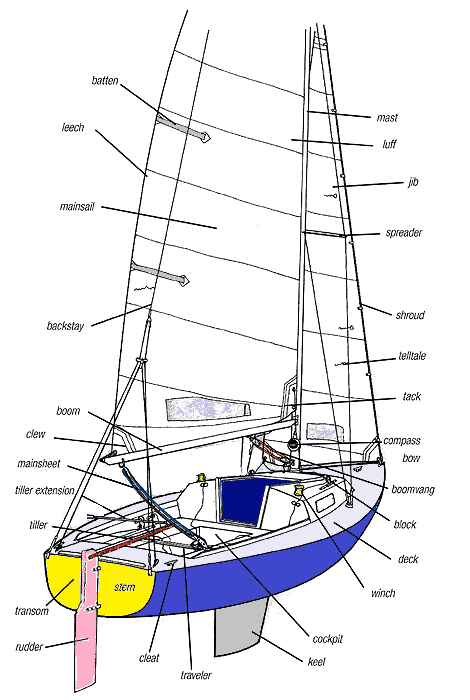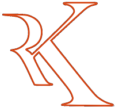What each skipper needs to know
The first step to learn how to sail a boat is to learn the different parts of the boat and basic terminology. Click on each link below to find the definition of each sailboat term.
The vertical spar in the middle of the boat from which the sails are set.
A steering apparatus
A fixed appendage on the bottom of a boat that provides the sideways resistance needed to counter the force of the wind.
Struts attached to the mast to increase the holding power of the shrouds
A fastening around or in which lines can be secured
A metal fitting commonly used to connect sails and halyards
Any piece of rope on a boat
A line attached to a small boat’s bow used to tie it to a dock or another boat
A pole of any type used to support the sails. Therefore the boom and the mast are considered spars.
The boom is connected to the mast by an articulated connection
The forward sail that is attached to the forestay
The headsail is also a generic term that refers to any sail that is set forward of the mast
When a jib is so large that it overlaps the mast, it is called a Genoa
When wind passes across an airfoil, it creates lift and drag.
Small sailboat, usually under 20 feetand open for most of its length
An object that is a right angle to theboat
Anything between you and the stern of the boat
The sails forward edge feels the wind first.
The corner of the sail between the luff and the leech
The bottom edge of a sail
A line that is used to raise or hoist the sail
A sheet is the primary line that controls the trim of a sail
The desirable force generated by the wind moving across the sail.
Please click here to read more about the physics behind sailboats.
The direction relative to the wind that the boat cannot sail
The point of sale at the edge of the no sail zone
A boat sailing across the wind
A boat sailing downwind
Toward the wind
Away from the wind
When you turn the bow of the boat toward the wind
Sailing on a run with the mainsail and jib on opposite sides of the boat iscalled
Sailing on a run with the mainsail and jib on opposite sides of the boat
When you turn the bow of the boat away from the wind
When the wind is blowing on the port side,
When the wind is blowing on the starboard side,
Ready about
Helm’s to Leeward
Prepare to Jibe
Jibe Ho

